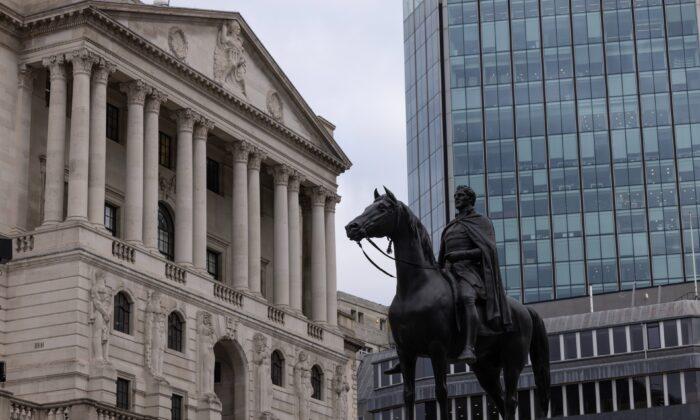UK earnings growth has accelerated to an eight-month high, despite further signs of strain in the jobs market, as vacancies tumbled once again, according to official figures.
The Office for National Statistics (ONS) said average regular pay surged to 5.9 percent in the three months to December, which is up from 5.6 percent in the previous three months and the fastest growth since the three months to April last year.
Wages outstripped Consumer Prices Index inflation by 3.4 percent, the ONS added.
The number of vacancies pulled back once again, down 9,000 to 819,000 in the three months to January.
But in a more encouraging sign, the ONS estimated that the number of UK workers on payrolls rose by 21,000 during January to 30.4 million.
This followed a downwardly revised drop of 14,000 in December.
The UK unemployment rate remained unchanged at 4.4 percent in the three months to December, although the ONS reiterated caution over the statistic due to an overhaul of the nation’s jobs survey.
The data come amid warnings from businesses over job losses and higher prices after the government moved to increase national insurance contributions and announced another rise in the minimum wage in last October’s Budget.
A survey by the Chartered Institute of Personnel and Development on Monday revealed that a third of businesses expect their employment costs to increase and said they plan to cut jobs through redundancies or recruiting fewer workers.
ONS Director of Economic Statistics Liz McKeown said, “Growth in pay, excluding bonuses, rose for a third consecutive time, with increases seen in both the private and public sector.”
“The number of employees on payrolls was broadly unchanged in the last three months of the year, continuing a medium-term trend of slowing growth,” she added.
Experts said it was clear that demand for workers was slowing, but that the jobs market is holding up.
Suren Thiru, economics director at the Institute of Chartered Accountants in England and Wales, said, “Fault lines are beginning to appear in the UK’s jobs market, as employers painfully adjust to a struggling economy and prepare for the looming national insurance hike.”
“The fall in the number of vacancies suggests that, despite chronic skills shortages, demand for workers continues to weaken under the weight of slowing customer demand and rising cost pressures.”
Rob Wood, of Pantheon Macroeconomics, said the better-than-feared payroll figures showed employment has “stalled rather than collapsed.”
“The jobs market holds up better than expected, generating strong wage growth that will keep the MPC cautious,” he said.
But the robust wage growth is set to give policymakers at the Bank of England a headache as they weigh up inflation pressures and a flagging economy.
The ONS data showed regular private sector pay growth jumped to 6.2 percent in the three months to December, the highest level since November 2023.
The Bank cut interest rates earlier this month to 4.5 percent from 4.75 percent as it halved its growth forecast for 2025, but signalled that further reductions would come “gradually and carefully” as it also warned over rising inflation.
Official figures on Wednesday are likely to show inflation rising to 2.8 percent in January, up from 2.5 percent in December, according to economists.
Another rate cut is unlikely to come as soon as next month, given the bank’s caution on inflation, according to experts, but many expect another cut in May.
Matt Swannell, chief economic adviser to the EY Item Club, said, “We think the MPC will continue to lower bank rate gradually, with the next cut likely to come in May, and that the Bank of England will use this extra time to gauge just how sticky inflation will be.”






